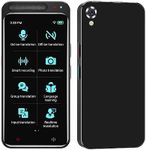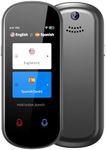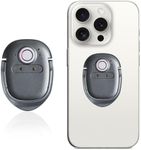Buying Guide for the Best Translator Devices
Choosing the right translator device can make your travels, business meetings, or conversations with people who speak different languages much smoother and more enjoyable. The best device for you will depend on where and how you plan to use it, the languages you need, and how comfortable you are with technology. Understanding the key features will help you find a translator that fits your needs and makes communication easy and reliable.Supported LanguagesSupported languages refer to the number and variety of languages the device can translate. This is important because you want to make sure the device covers the languages you expect to encounter. Some devices support only a handful of major languages, while others offer dozens or even over a hundred. If you only need to translate between a few common languages, a basic device may be enough. However, if you travel widely or work with people from many countries, look for a device with a broad range of supported languages.
Translation ModesTranslation modes describe how the device translates—such as voice-to-voice, text-to-text, or photo translation (for signs and menus). Voice translation is great for conversations, while text or photo translation is useful for reading documents or signs. Some devices offer all these modes, while others focus on just one. Think about your main use: if you’ll be talking with people, prioritize voice translation; if you need to read menus or documents, make sure the device can handle text or images.
Online vs. Offline CapabilityThis spec tells you whether the device needs an internet connection to work. Online translators often provide more accurate and up-to-date translations, but they require Wi-Fi or mobile data. Offline capability means the device can translate without internet, which is useful in remote areas or when traveling abroad. If you’ll be in places with unreliable internet, choose a device with strong offline features. If you’re mostly in connected areas, online-only devices may be fine.
Battery LifeBattery life indicates how long the device can operate before needing a recharge. This is important if you’ll be using the device for long periods or won’t have easy access to charging. Devices with longer battery life are better for travel or all-day events. If you only need it occasionally or for short conversations, battery life may be less critical.
Ease of UseEase of use covers how simple the device is to operate, including the clarity of its buttons, menus, and instructions. Some devices have touchscreens and intuitive interfaces, while others may be more basic or require more steps to use. If you’re not very tech-savvy or want something quick and straightforward, look for a device known for its user-friendly design.
Audio QualityAudio quality refers to how clearly the device can pick up and play back speech. Good microphones and speakers are important for accurate voice recognition and for making sure both you and the person you’re talking to can hear the translation clearly. If you’ll be using the device in noisy environments or with people who speak softly, prioritize models with high-quality audio components.
PortabilityPortability is about the size and weight of the device. Smaller, lighter devices are easier to carry in your pocket or bag, making them ideal for travel or daily use. If you need a device for on-the-go situations, look for compact models. If you’ll mostly use it in one place, size may be less important.











